First I apologize for my ignorance on this matter and for perhaps asking a question that for this forum is obvious. I'm trying to make my first headphone amp using tubes. I have seen some circuits on the internet using tubes, 6k4, 6J9, 6N2, 6N2, 12AU7, 12AX7 etc. but all of them with supply voltage of 12 volts. In my limited experience (Ham radio) I have never used such small voltages... and according to the dynamic plate curves ( ib as a function of Eb with Eg as parameter) and my limited knowledge, with those voltage levels, the valve is very far from working in its linear zone, and consequently its distortion should be high. But supposedly these amplifiers have very low distortion, which seems contradictory to me. My question is: really with 12 volts is it possible to get a low distortion amplifier (and what is the applied concept), or in these amplifiers are the valves just "for decoration"?
Tks in advance
Tks in advance
Good question. I think you really should show the circuit.
I have seen circuits where the tube was just an ornament without being involved in the signal chain.
I've also seen tubes run at very low voltage, so both could be the case.
Jan
I have seen circuits where the tube was just an ornament without being involved in the signal chain.
I've also seen tubes run at very low voltage, so both could be the case.
Jan
There are also preamp boards in Aliexpress that have a built-in SMPS to generate B+ from a 12V brick.
Just for decoration, unless they are boosting the voltage. With a 12VDC supply you could use a boost regulator, e.g.:Really with 12 volts is it possible to get a low distortion amplifier (and what is the applied concept), or in these amplifiers are the valves just "for decoration"?
http://www.hagtech.com/pdf/cornet3.pdf
Or with an 12VAC supply you could go ala Tubecad:
https://tubecad.com/2013/03/blog0258.htm
1. Use 12V to power the filament (for good looks); and use 12V to power a solid state amplifier to get a linear amplifier with only 12V B+.
2. Switcher to boost B+;
or Solid State;
or Tubes at 12V B+ (will be non linear).
Just my opinions.
2. Switcher to boost B+;
or Solid State;
or Tubes at 12V B+ (will be non linear).
Just my opinions.
Not possible, even if they are just cathode followers.My question is: really with 12 volts is it possible to get a low distortion amplifier (and what is the applied concept), or in these amplifiers are the valves just "for decoration"?
There are a whole series of tubes designed to run with 12 volts on the plate. They were developed for the last round of vacuum tube car radios which were all tube except for a single fat germanium TO-36 transistor for the SE output stage. Google "space charge tubes" for some info. There were also a few ordinary tubes respecified for 12 volt operation. I can only remember the 12U7 which is a 12AU7 with a new set of curves drawn for low voltage use. There have been a few low voltage low powered guitar amps made with one or more 12AU7's or 12U7's (both work) driving a pair of 12K5's. The 12U7 or 12AU7 in push pull will only deliver a few milliwatts (less than 50) on a 12 volt supply. THD is about 2%. There were also a few tubes designed for 26 volt operation in aircraft. The 26A7 is a twin pentode in a single octal bottle capable of half a watt of audio output on a 26 volt B+ supply.
With the 26A7 needing 26.5V for the filament, we would need a switcher to take 12V and convert to 26.5V.
If you then have 26.5VDC, then use that for B+ as well, instead of 12VDC.
If you then have 26.5VDC, then use that for B+ as well, instead of 12VDC.
The few 26A7s I played with were incredibly microphonic.
I mentioned the 26A7 because I had some from a large (100,000 tubes) lot of used military tubes that I got over 20 years ago. I looked them up, then put them in the lot that I sold in bulk to Stan at ESRC. There were some other aircraft tubes in that lot too, but I never played with any of them. I never tried them for the reason 6A3sUMMER mentioned. If you need a switcher to step up from 12 volts, why not build one for a more reasonable B+ voltage in the 100 to 200 volt range. I wanted to build a tiny battery operated guitar amp in a time period before lithium batteries were common. I wound up using a 7.2 volt NiCad from a RC car powering a 6AK5 tube feeding a 6AQ6, driving a pair of 6AK6's in push pull. A small unregulated switcher made B+ in the 150 to 200 volt range depending on battery charge and volume level. All tubes were chosen for minimum heater current draw to maximize battery life. I briefly experimented with some DHT battery tubes, but they were REALLY microphonic. The breadboarded amp is still in a box here somewhere but it hasn't seen power in nearly 20 years.With the 26A7 needing 26.5V for the filament, we would need a switcher to take 12V and convert to 26.5V.
If you then have 26.5VDC, then use that for B+ as well, instead of 12VDC.
An unavoidable issue with any valve amplifier is grid current. At low grid-to-cathode negative voltages, some appreciable current conducts into the grid, and this current varies very non-linearly with voltage. With a very low driving impedance that stuff doesn't matter much, but ordinary circuits with ordinary circuit impedances have an inherent distortion generator at grid-to-cathode voltages approaching zero. Another way of looking at this is to say that Class A2 (nominally operation with grid currrent) has a grey area between itself and Class A1 (where we can safely pretend that grid current is zero). This issue of voltage dependent grid current is independent of valve type and intended application - low grid-to-cathode voltages require low driving impedance to avoid a diode-y distortion. Or more bias voltage.
So, can one operate ordinary vacuum valves at 12 Volts? Yes, but we must accept either very low transconductance or very low circuit impedances, or a big (not modelled) distortion source.
All good fortune,
Chris
So, can one operate ordinary vacuum valves at 12 Volts? Yes, but we must accept either very low transconductance or very low circuit impedances, or a big (not modelled) distortion source.
All good fortune,
Chris
I remember this page having some battery-powered tube projects:
https://digilander.libero.it/paeng/projects_frame.htm
https://digilander.libero.it/paeng/projects_frame.htm
Tks a lot by the comments,
To try to be clearer about my doubt, I am attaching a schematic that uses a 12AU7 tube, with a supply voltage of 12 volts. I also attach the plate curve of that tube where it shows that for that supply voltage the grid voltage should be positive, any one could be explain what is the working point for this tube in this condition?
To try to be clearer about my doubt, I am attaching a schematic that uses a 12AU7 tube, with a supply voltage of 12 volts. I also attach the plate curve of that tube where it shows that for that supply voltage the grid voltage should be positive, any one could be explain what is the working point for this tube in this condition?
Attachments
Some radios used on the farms 30V systems used the 48 as an output tube.
The 48 was originally designed for operation in city centers using Edison's DC power system.
The H=K assembly is not well suited to AC supplies.
The 48 was originally designed for operation in city centers using Edison's DC power system.
The H=K assembly is not well suited to AC supplies.
Attachments
Hi Tks a klot for your comment,
yes! I agree that there are tubes that efectively works with Low EBB, they was used in car radios or portable communication systems, but they was designed for that application, as example we have the 12AD6, 12AL6, 12AL8 with maximun plate voltage of 30 volts,. But is not the case for 12AX7, 12AU7, 6J1, 62N2 ect populary shown in internet sites with 12Volts of power supply. These tubes was not designed to work with 12V of power supply, In fact there are not characteristics curves for that voltage level, then I keep my question, how these circuits could works fine??
yes! I agree that there are tubes that efectively works with Low EBB, they was used in car radios or portable communication systems, but they was designed for that application, as example we have the 12AD6, 12AL6, 12AL8 with maximun plate voltage of 30 volts,. But is not the case for 12AX7, 12AU7, 6J1, 62N2 ect populary shown in internet sites with 12Volts of power supply. These tubes was not designed to work with 12V of power supply, In fact there are not characteristics curves for that voltage level, then I keep my question, how these circuits could works fine??
Attachments
1j42b has maximum plate voltage of 20 V. 12 V is its typical working voltage.
Distortion wise, at low and very low signal levels (e.g. phono pre), all tubes are very linear regardless of plate voltage. It is high signal levels (e.g. driver stage) where plate voltage matters for distortion - the higher the plate voltage, the lower the distortion.
Distortion wise, at low and very low signal levels (e.g. phono pre), all tubes are very linear regardless of plate voltage. It is high signal levels (e.g. driver stage) where plate voltage matters for distortion - the higher the plate voltage, the lower the distortion.
- Home
- Amplifiers
- Tubes / Valves
- Minimum voltage for linear region of amplification
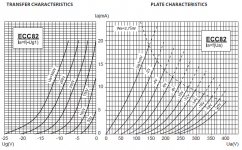
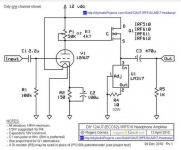
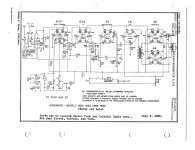
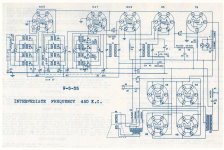
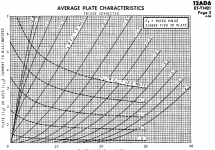
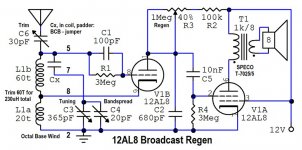
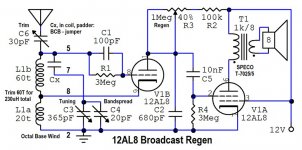
 . Rare and consequentely expensive i believe
. Rare and consequentely expensive i believe